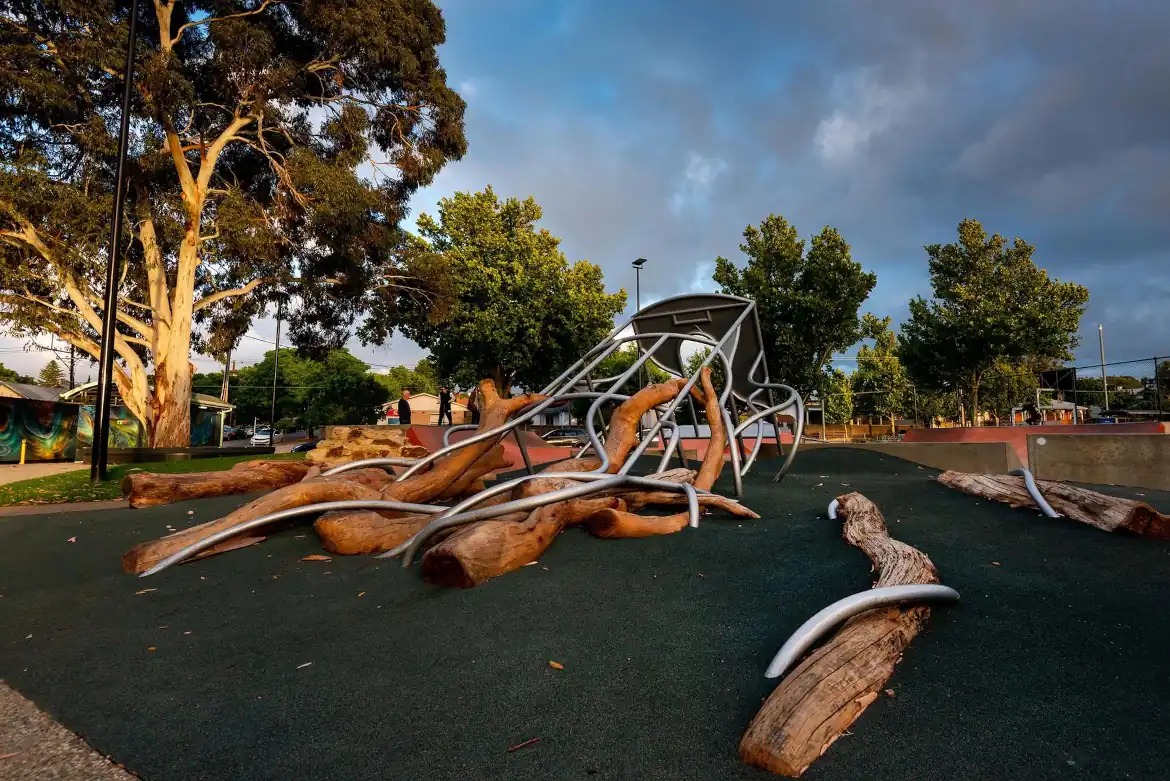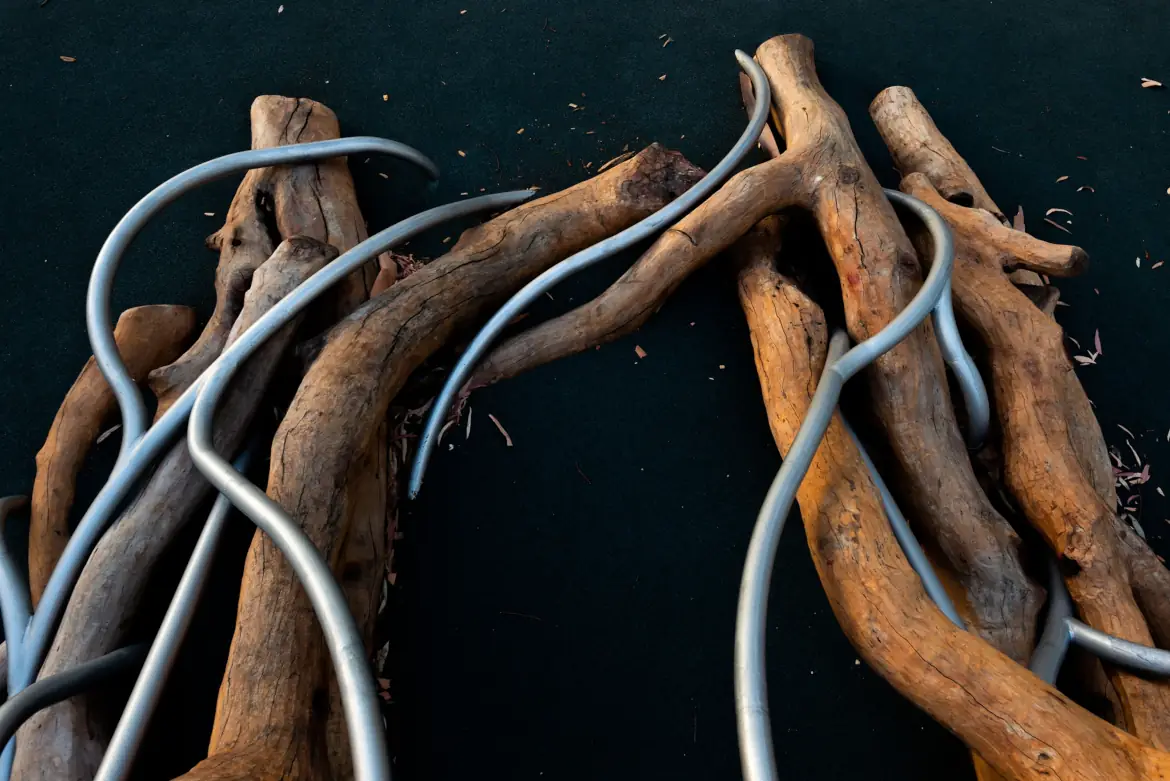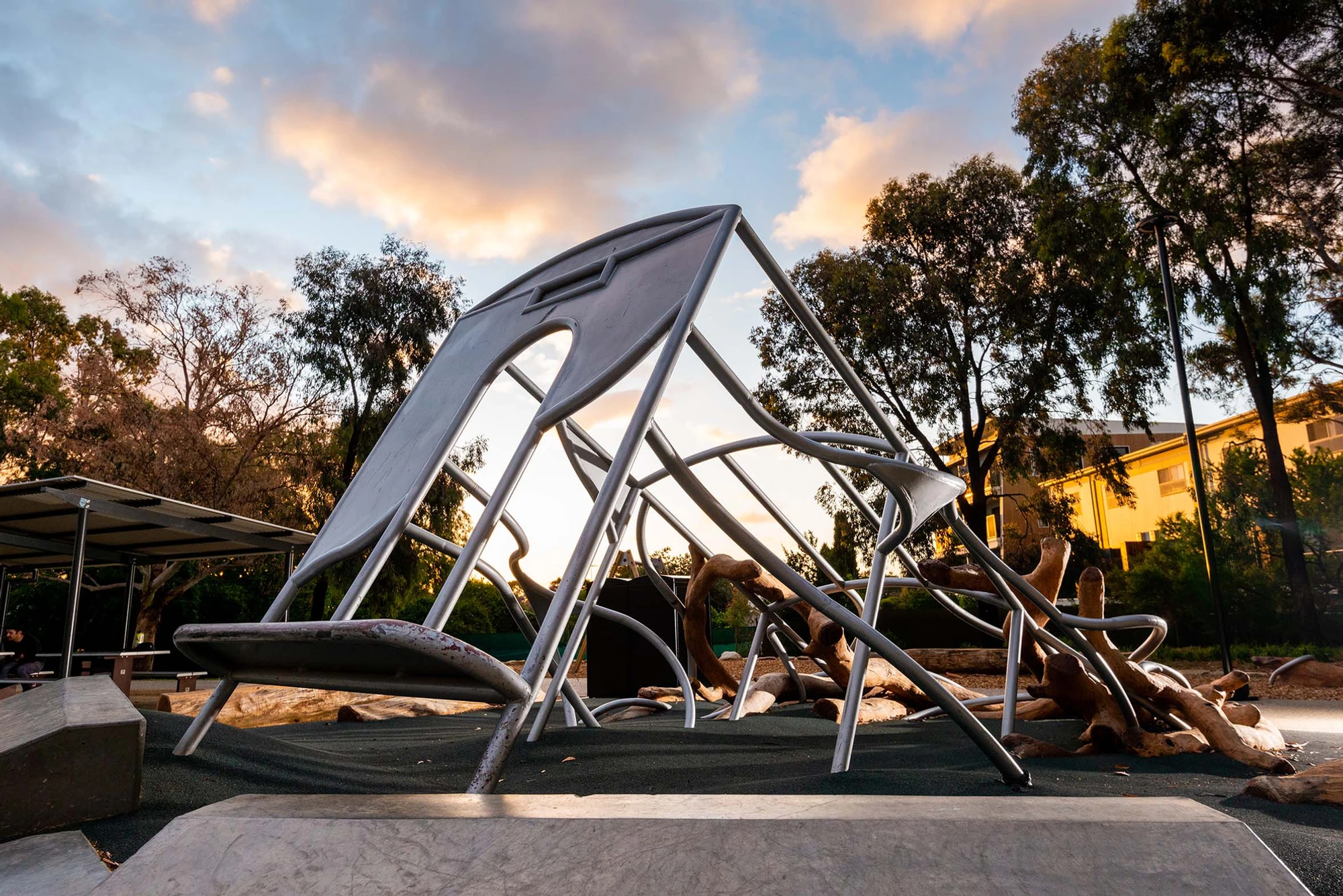Artbox / Flowbars - Sculptural Playgrounds
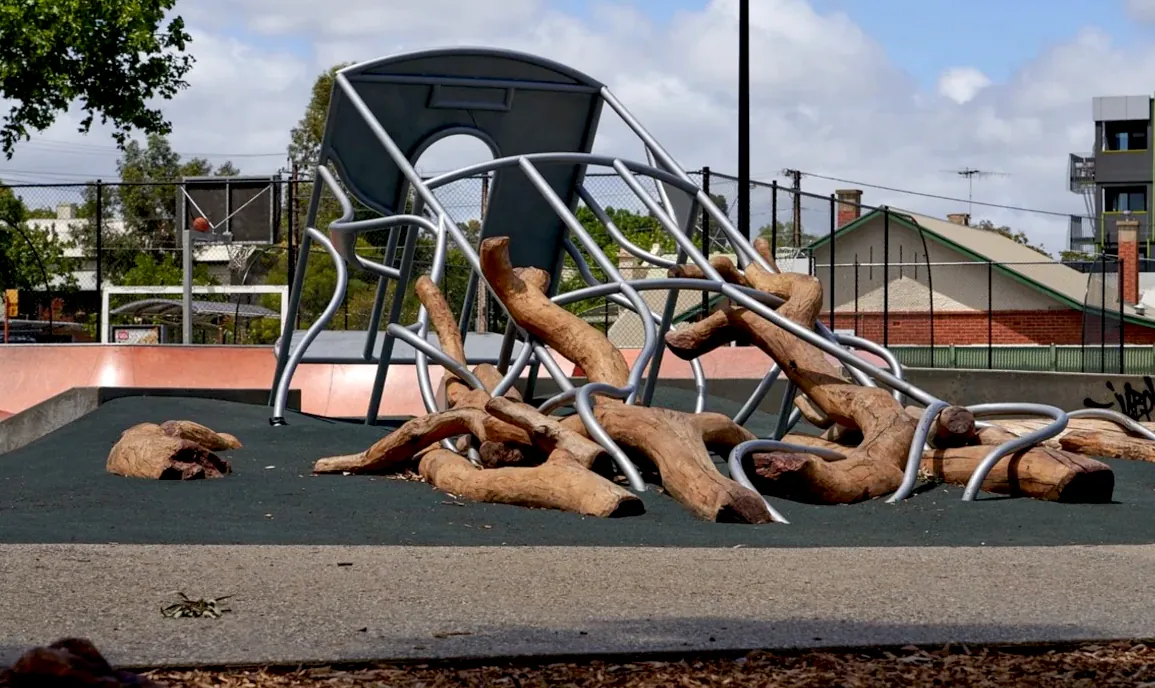
Flowbars are interactive, free-flowing sculptural works that exist at the intersection of arts, science and play. Originally created as three-dimensional line drawings, and now realized as functional play equipment. These sculptures evolve play structures to enhance creativity, physical literacy and cognitive agility.
Neuroscience of Flow Bars
Ian Gibbins is a Neuroscientist and Emeritus Professor, Flinders University. Ian has been internationally recognised for his research on the microscopic structure and function of the nerves that monitor and control the activity of the internal organs. He has over 100 peer-reviewed publications and book chapters
“An enormous proportion of our brain is devoted to processing visual and tactile sensory input into our plans for movements, our knowledge of objects, and how we interact with them. Core to this processing is our own body sense: where each of our limbs is in space (proprioception), how we are oriented compared with other objects, how far away from our body an object is. As we experience and interact with the physical world, we develop a detailed functional knowledge of its components: the shapes and weights of objects, how we can handle and manipulate them, how they are likely to interact with each other.

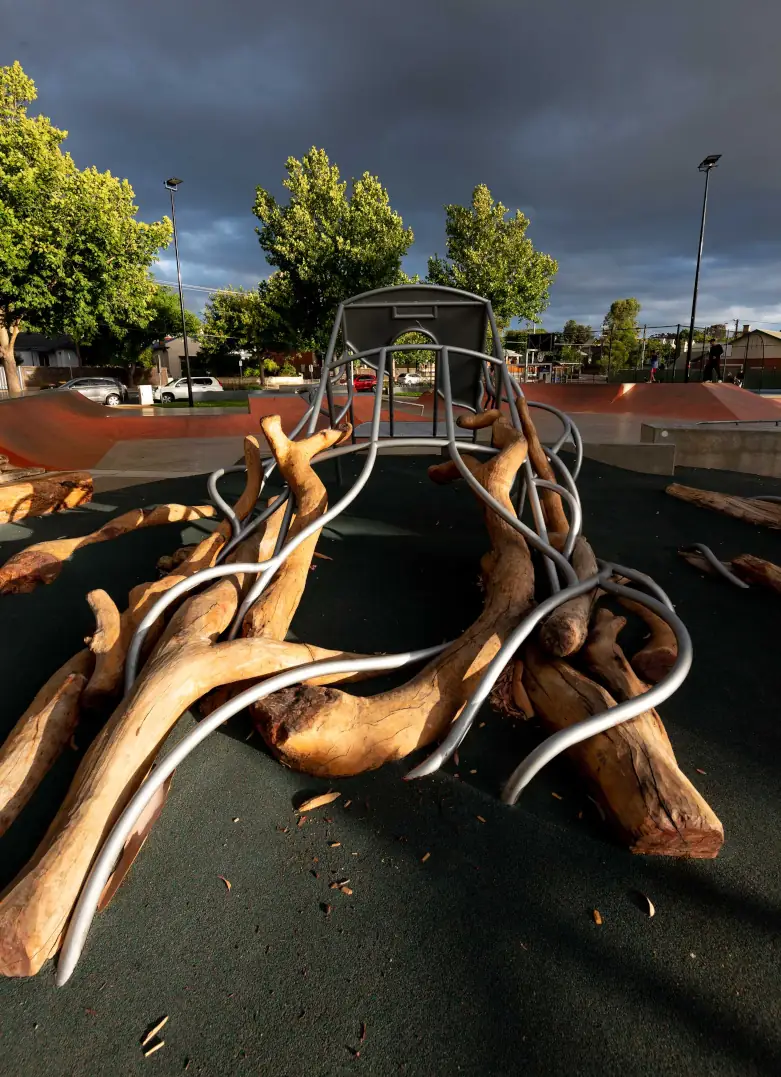
This knowledge is distributed over multiple regions of the brain and is largely subconscious to the degree that it is difficult to describe verbally: it can only be shared by showing and watching. Exploring the Flowbars brings all these elements of sensory-motor processing into action. Approaching the Flowbars for the first time, the visual system estimates their height, the distance between each section of the structure, the diameter of each bar, and much more. This visual information is transformed via the premotor system into plans for action: how the body itself will move, and how the body will interact with the external elements of the Flowbars.
Movement Autonomy
Flowbars' non-linear arrangement provides endless pathways that can be navigated from one side to the other. They inspire movement decision making and give the climber a sense of sovereignty in where and how they will climb. Climbers must use creative problem solving, real-time navigational decision making and are constantly expanding their spatial awareness and self orientation.
Flowbars ask how you would like to play. There is no right or wrong way to participate. No set directions. No immediate goals that are set out for you. There is a multitude of entry points that suit different capability levels. Inclusivity is inbuilt into the design.
There is also no limits as the structure continues to unlock new potentials as one advances in body awareness and ability.
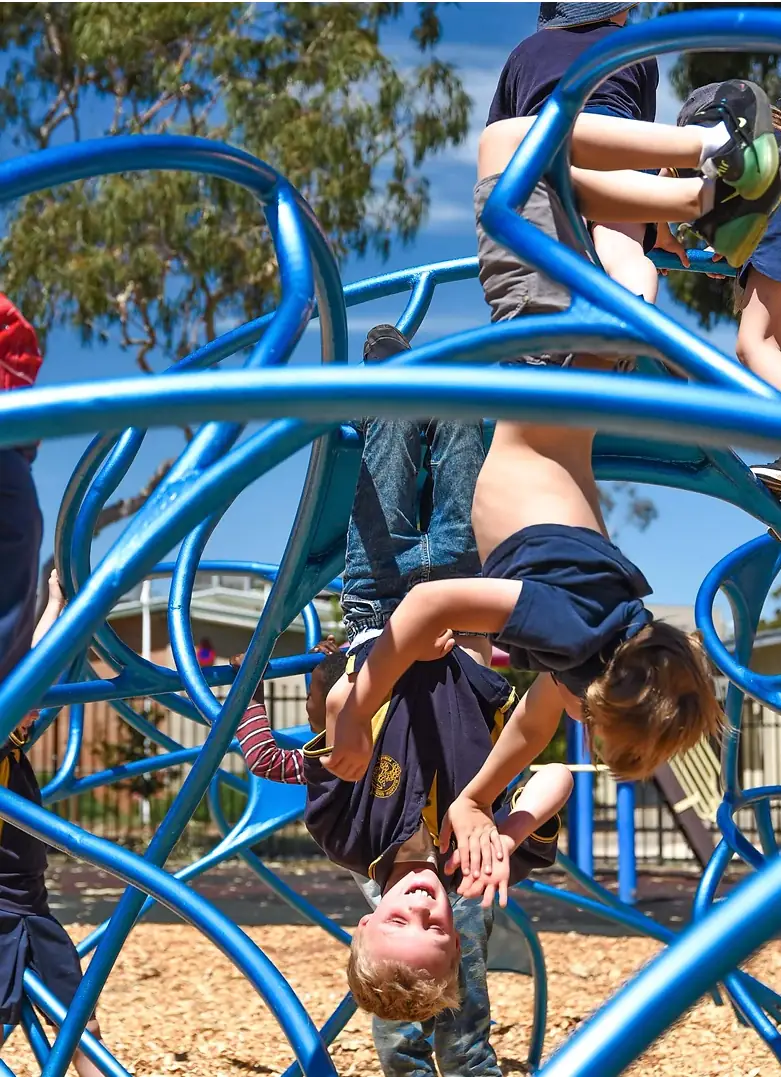
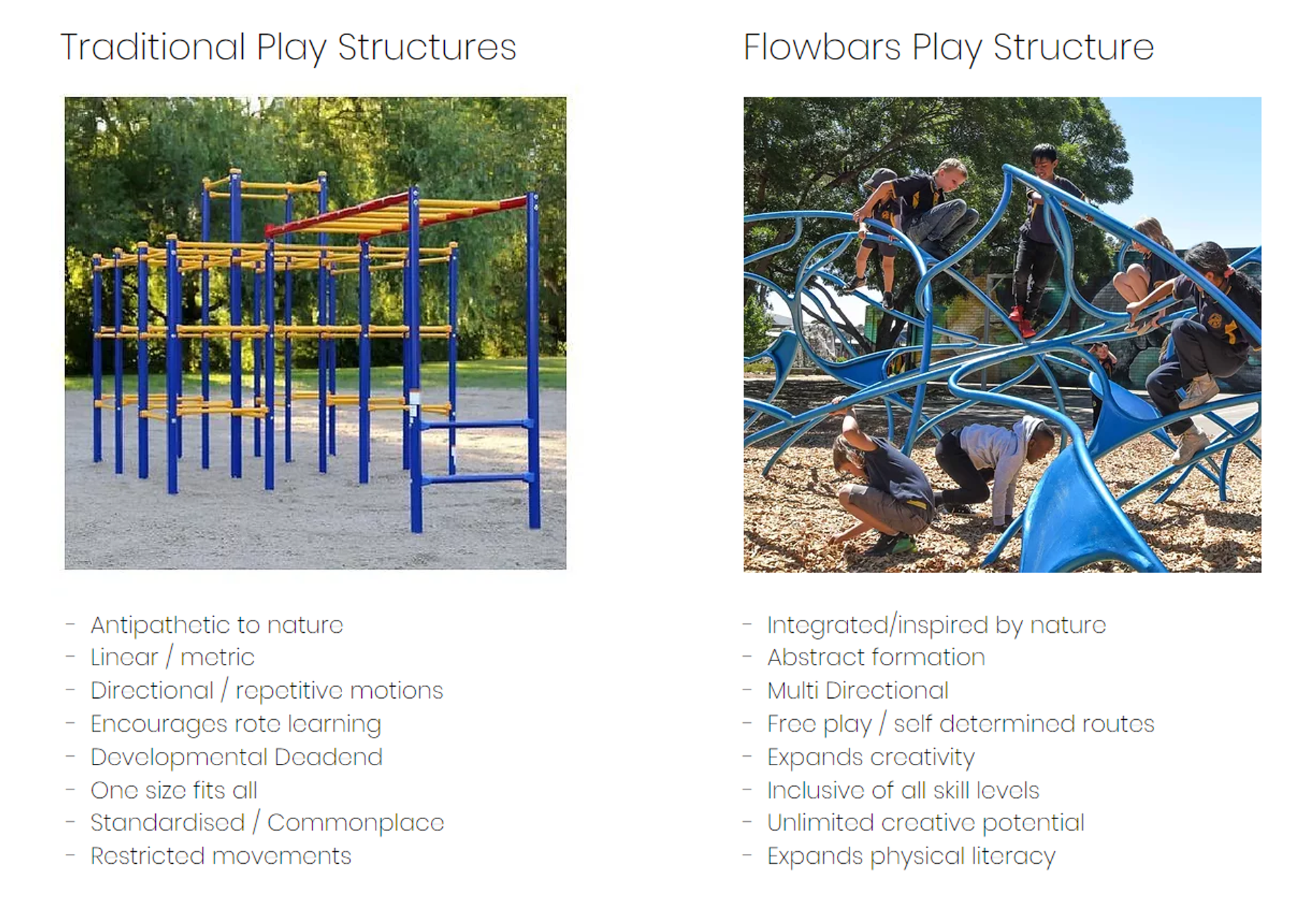
Traditional play structures employ a linear-metric structural composition that demands play within a certain pathway. For instance, standard monkey bars.
This pathway is often rote learnt, becoming a developmental dead-end once its repetitive movements are memorised. Such structures are based in ‘one size fits all' models of education, and standardised testing that rewards completion and achieving quantitative outcomes. The sense of a flow state is rarely accomplished with such play equipment, as they do not engage a cognitive / creative element.
Unlike a traditional climbing structure, the whole body is engaged while traversing the Flowbars. Young people need to creatively navigate the bars as they learn new skills and develop body awareness. This expansion of their movement vocabulary includes stretching, lunging, swinging, gripping, crawling and jumping at very irregular spatial intervals and with unusual body positioning.
All these attributes increase ones confidence in their physical literacy. Engaging in challenging and creative game play the ease of acquiring new skills comes naturally.
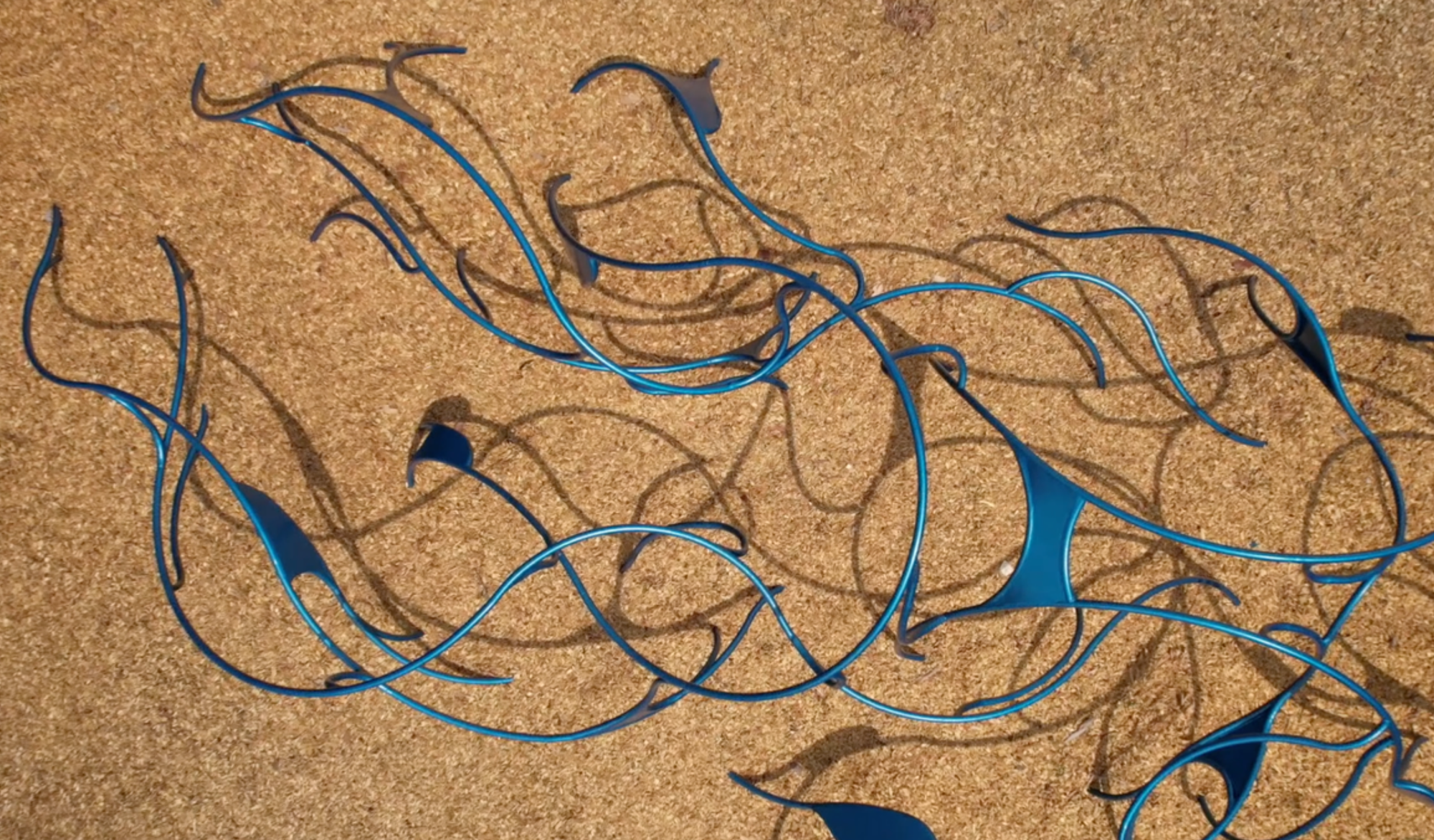
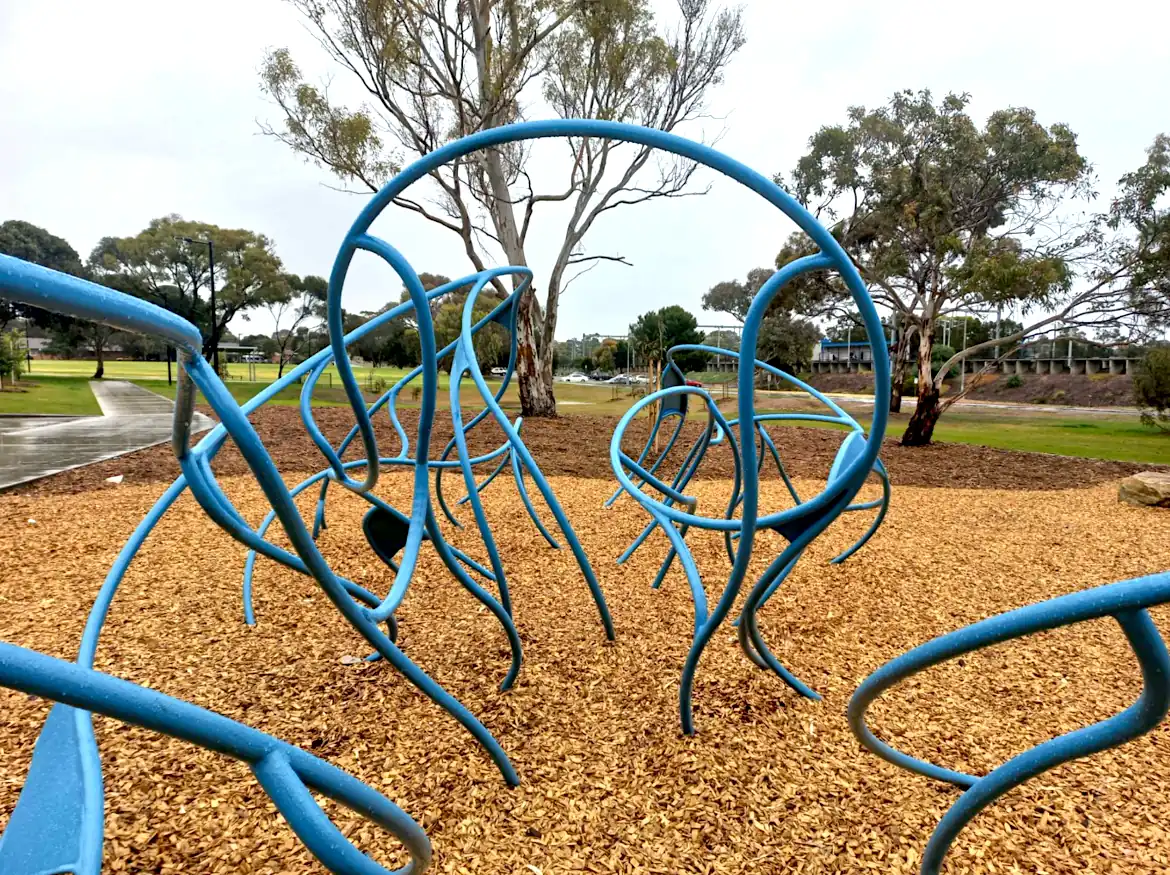
Artbox works with artist Sebastian Humphreys to develop these bespoke sculptural play features for public playgrounds and for schools. Each implementation of the Flowbars installations are completely unique with enhanced integration into each of their site-specific environments.
All were delivered with in collaboration with engineering, architect and construction partners ensuring all aspects of the sculptures were safe and compliant with Australian standards of child play. Flowbars have been commission by the City of Prospect and City of Onkaparinga, Elizabeth South Primary School, and City of Charles Sturt.
